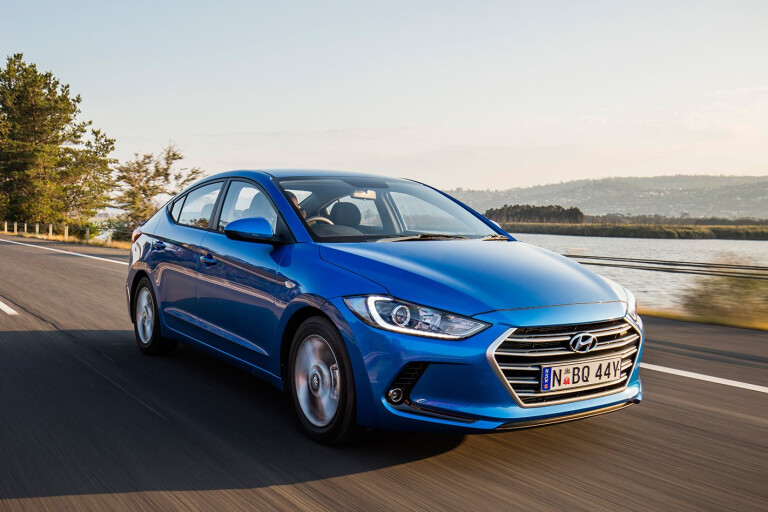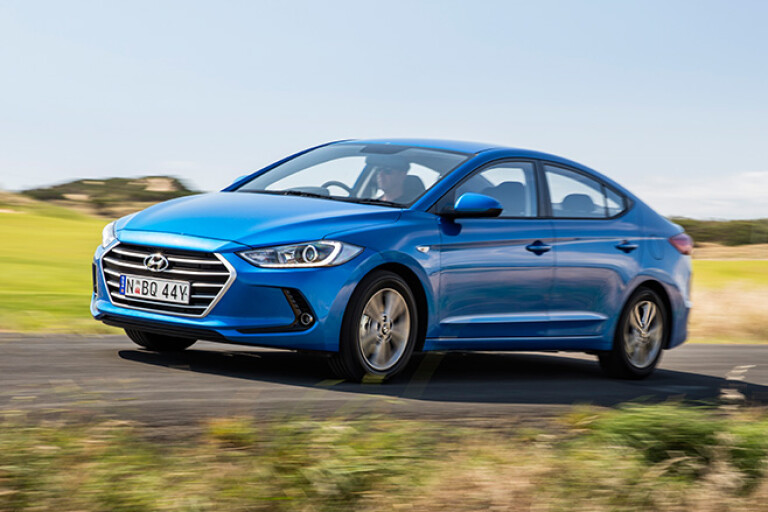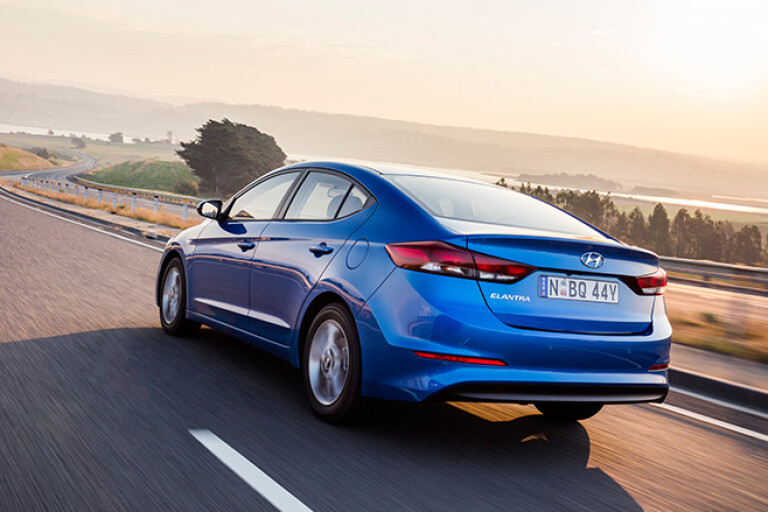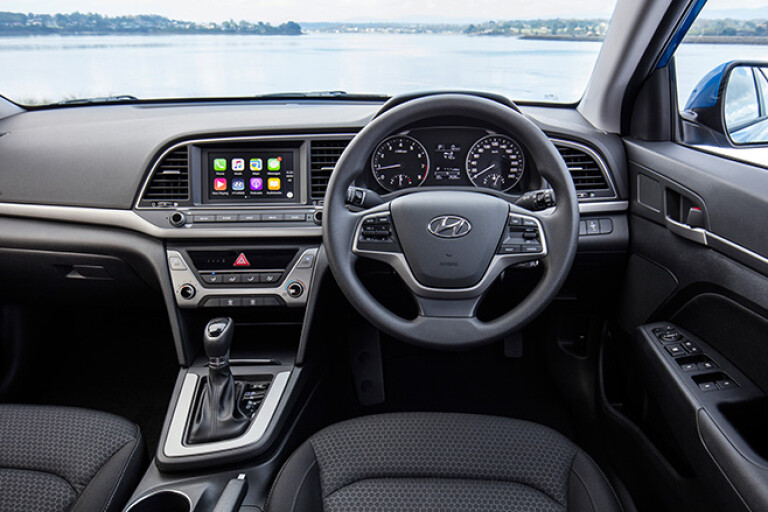
TELL ME ABOUT THIS CAR
The Hyundai Elantra is a small sedan based on the i30 hatchback, meaning it has a longer boot added onto the back. Hyundai updated the Elantra in March 2016 and in Australia it is one of the more popular cars in its class. The Elantra Active model is powered by a 2.0-litre four-cylinder engine producing 112kW and 192Nm.
STRENGTHS
- Equipment. Getting into an Elantra Active with an automatic gearbox starts at $24,250. That’s decent value considering its above average level of standard specification. It has auto headlights and wipers, reversing camera and parking sensors, LED daytime running lights and front fog lamps, and a reasonably good set of active safety systems.

- Space. Roomy front seats and generous rear legroom make the Elantra accommodating inside and easily able to transport adults in the back. The front seats have good lateral support, though the cushioning is fairly firm and the seat bases are quite short.
- Styling. Hyundai has come a long way with its exterior designs, and the Elantra is now one of the more attractive small sedans on the market. Its roofline and proportions have coupe-like sleekness, while other design elements like the headlights and taillights take cues from more premium vehicles.
- Convenience. As a vehicle built for everyday ease of use the Elantra does a good job of catering to basic functionality with minimal fuss. The rear seats can split fold for more cargo room, there are rear air vents and multiple 12V sockets up front. It doesn’t have huge grunt, but the conventional automatic gearbox offers decent take off and makes the engine seem livelier around town.

WEAKNESSES
- Plastic. It’s everywhere inside the Elantra. One of the biggest let downs is the bare plastic steering wheel, which makes the whole interior package seem cheap. It’s the first thing you touch when you get inside, and the one part of the car you have in your hands the most. Hyundai Elantra Elite and SR and almost all of the Elantra’s competitors have leather wrapped steering wheels.
- Refinement. The ageing 2.0-litre four-cylinder engine in Elantra is on the noisy side. It has buzzy vibrations at higher revs that intrude into the cabin and feel unpleasant. Otherwise, the cabin is quite well isolated from road noise and fairly quiet.
- Ride. Hyundai’s Australian outfit worked on a unique suspension tune for the Elantra, which does a good job with what was available, but the ride loses composure over larger bumps and when carrying passengers. It feels like it needs more suspension travel and is outclassed by cars like the Honda Civic sedan.

- Efficiency. Fuel economy is a claimed 7.2L/100km for automatic Elantra Active models. That’s significantly more than the Mazda 3’s similar 2.0-litre four-cylinder engine, which uses 5.7L/100km.
ANY COMPETITORS I SHOULD CONSIDER?
The Mazda 3 Maxx sedan is priced similarly, at $24,890. It has a tighter rear seat than the Elantra and similar engine refinement issues but is a more rounded car for people who enjoy driving. The Honda Civic VTi-S sedan is another option, at a cost of $24,490. It has a better interior and a more comfortable ride, though its exterior styling is fussier and its CVT gearbox is a weak point. There’s also the Ford Focus Trend sedan, which has a powerful turbocharged engine offering good performance while using more fuel than these others. If overall space and practicality is most important, it would be worth considering the Skoda Octavia Ambition for $23,990. It has an enormous boot, large rear seat and a punchy turbocharged engine.
MORE: Hyundai Elantra Range Review
MORE: Hyundai Elantra Specs, Range & Price
COMMENTS